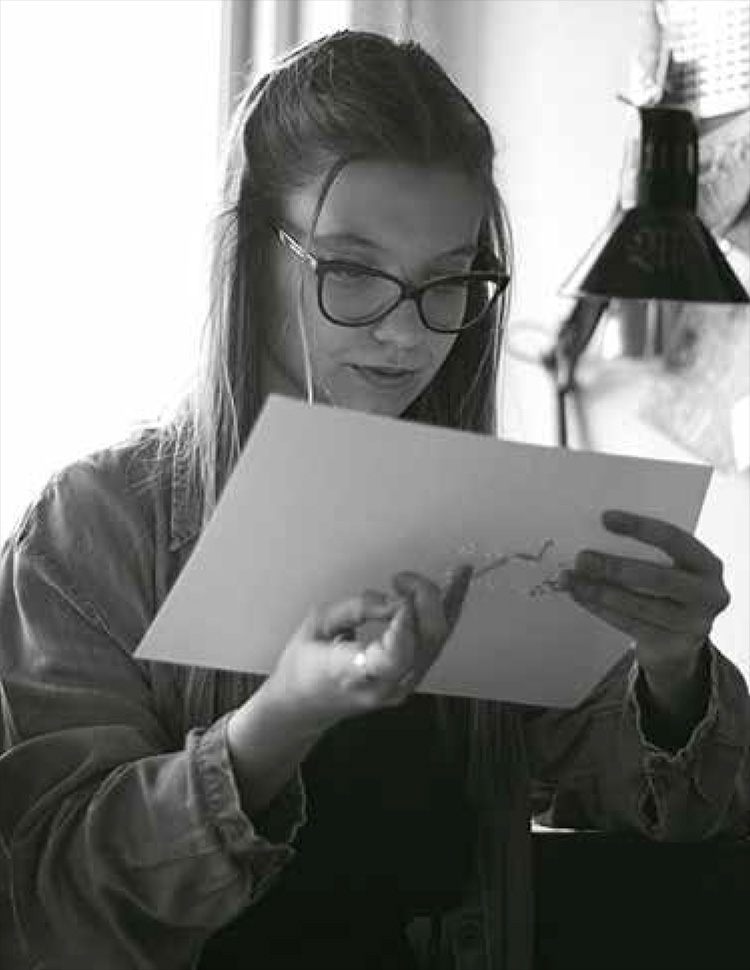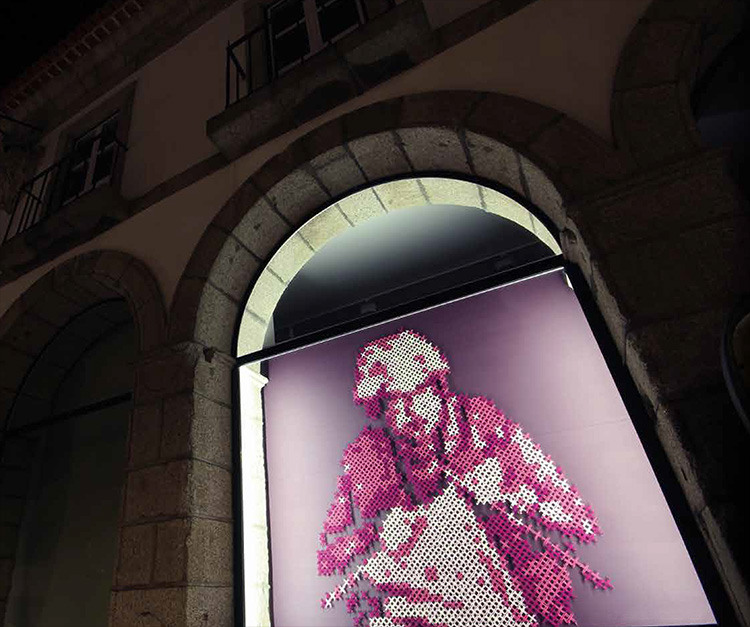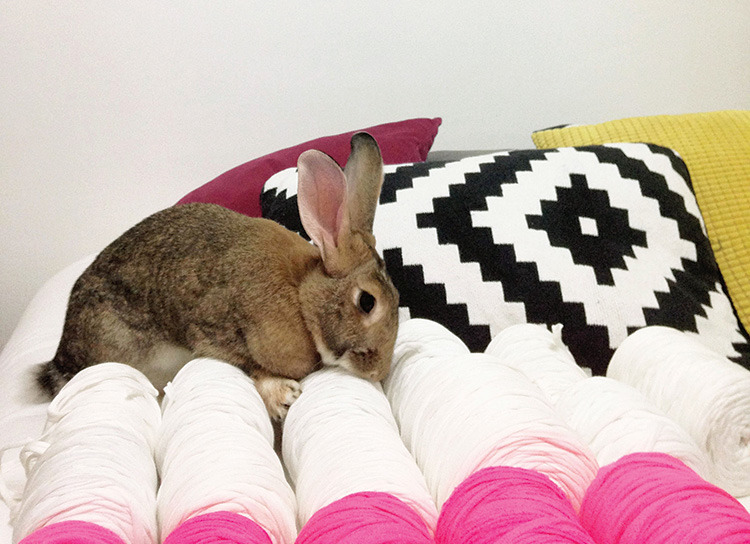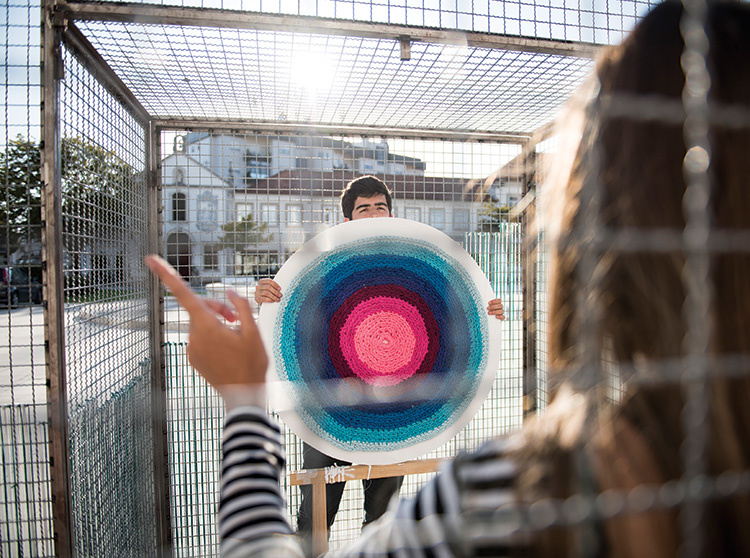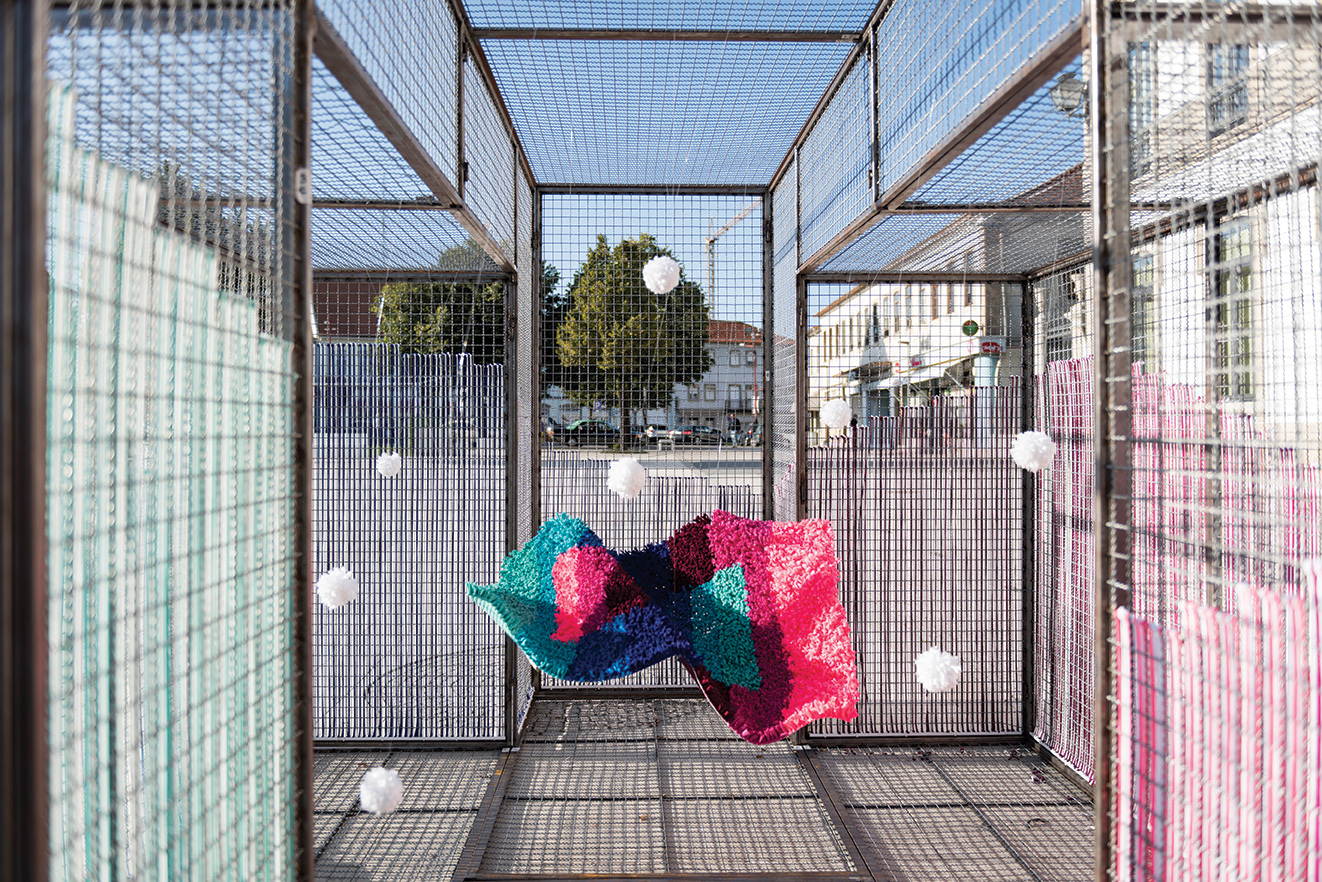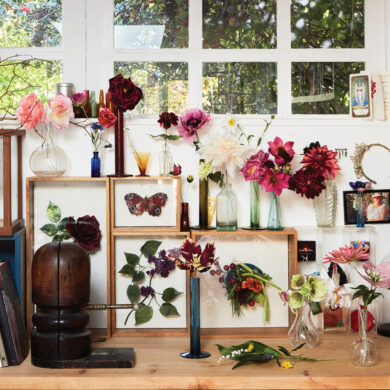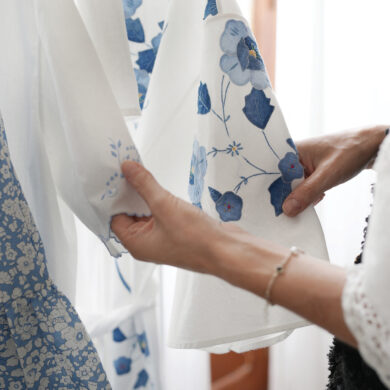I didn’t think twice before experimenting and taking it to another level.
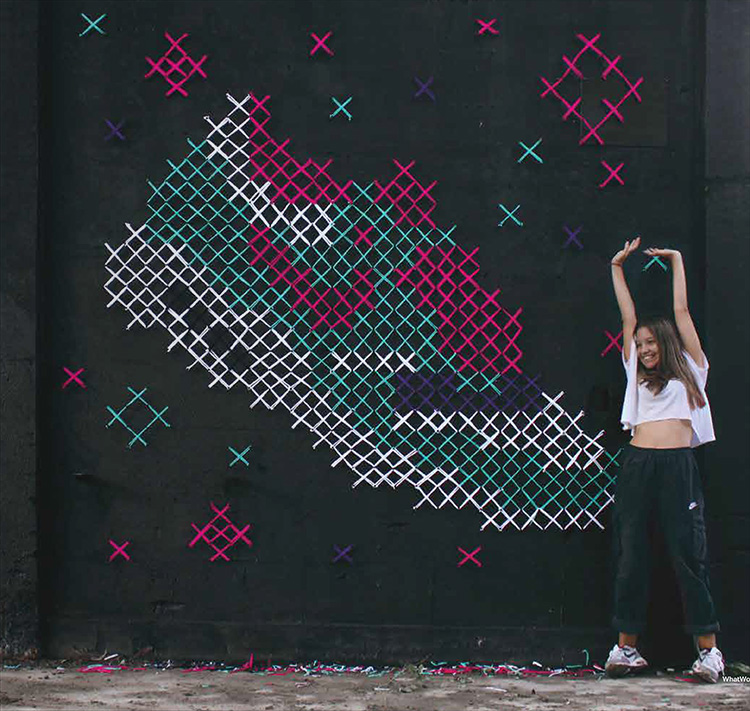
I’ve grown up seeing my great-grandmothers, grandmothers and mother sewing, knitting and embroidering together. I remember seeing them sharing tips and patterns. It was inevitable to want to try, so I asked them to teach me. Somehow, I’ve always wanted to be part of that “club,” and when I joined I found that was the best way to spend my free time and learn something new. This journey started really early in my life without me even being aware of it. The environment I grew up in, those traditional techniques, and the knowledge passed through the women of my family influenced my path.
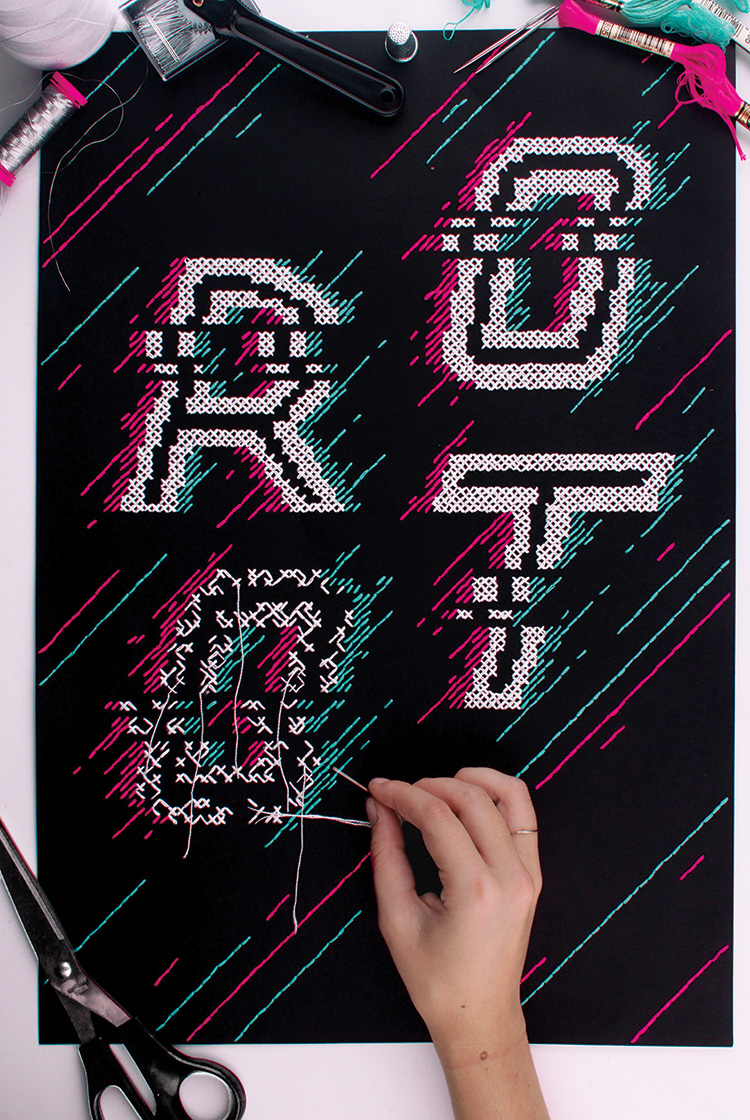
However, my perspective about embroidery changed three years ago when I stumbled upon cross-stitch. One day during my bachelor studies in graphic design, I saw my grandmother doing cross-stitch on a kitchen cloth and it blew my mind. I quickly realized that cross stitches worked in the same way as pixels. Two similar units which came to life in different generations; one very traditional and done by hand and the other one, which has emerged with digital evolution. My favorite item in my studio is the cross-stitched letters sample my grandmother gave me.
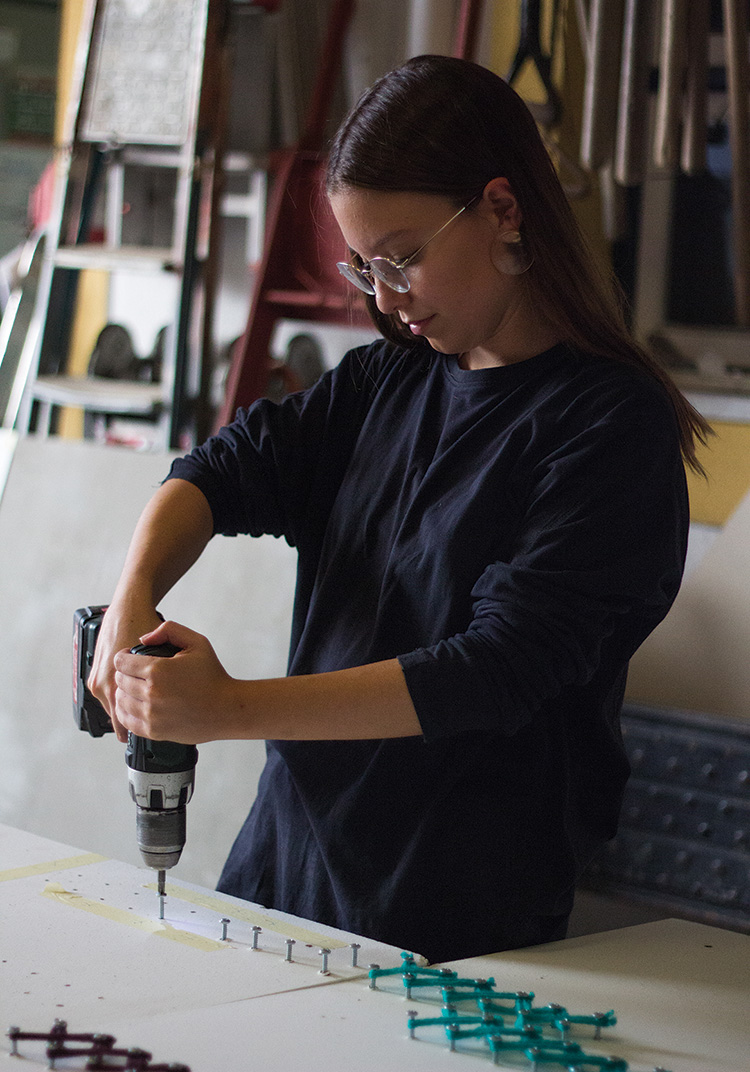
As a graphic designer and graffiti lover, I’ve always been amazed by typography and everything made sense when I saw those traditional letters carefully hand-sewn. This was a turning point for me. As I was studying graphic design, the pixel was my working medium; it was a quick step to use the potential of cross-stitch. I decided to start doing posters with cross-stitch, using modern graphics and applying technological effects like pixel glitch. To achieve this result I had to adapt and scale up the technique to be able to work on paper.
How interesting it is to be able to connect two different generations by combining concepts and techniques from both.
Later, the art world started to call to me and this led me to try bigger pieces on wood so my pieces could have more of an impact and be more unexpected. The stitches were growing at the same time as the potential of this technique. With an additional background in graffiti, it was just a question of time until I worked up the willingness to take my pieces to the street. What I wasn’t expecting was that from one day to another I would be looking at a cross-stitch piece bigger than myself, having to go closer to see the details and textures and having to step back to figure out the entire piece.
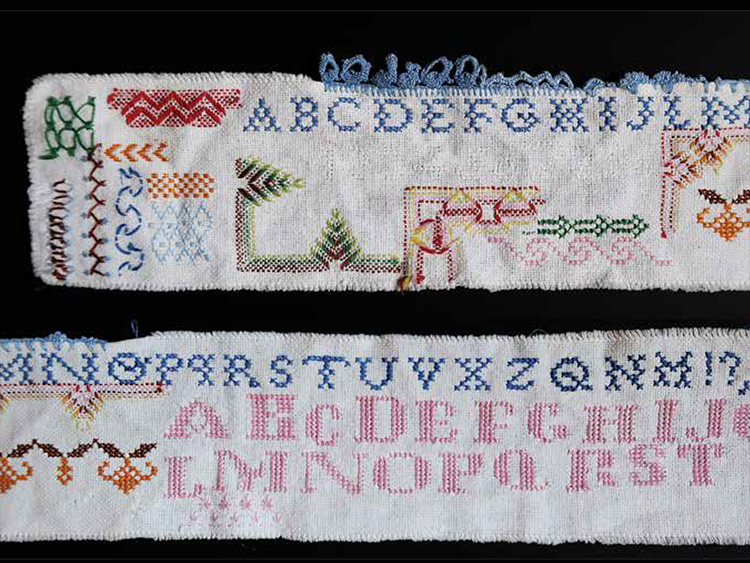
My work process is very curious. I always start a piece working on digital software to plan everything, including the final pattern. Things move quicker that way. After that, it’s time to pick up the needles, threads and scissors and do the manual production. In some cases, I go back to digital to finish it. I’m always jumping from analog to digital and vice versa. When making cross-stitch walls, this process feels even stranger. One day I’m at home with my grandmothers preparing the wool loops, and suddenly, the next day I’m in a workshop working with power tools, wood, screws and nails. To take cross-stitch from the comfort of my home I had to modify the technique itself, the work process and the materials I used to work with.

Each piece I do carries a different message. I usually look at everything from a graphic designer’s perspective. In graphic design you always have a briefing to answer, a communication problem to solve and a target audience. In my work, and specifically in my street artworks, I always try to find a theme by understanding where I’m going to be working, what kinds of people live there and what their traditions and histories are. Then, I try to focus on the theme that draws my
attention the most; the one I think is most relevant for that specific purpose. Finally, somewhere in this research I find a message that I want to reflect with my artwork; this guides my process until the end.
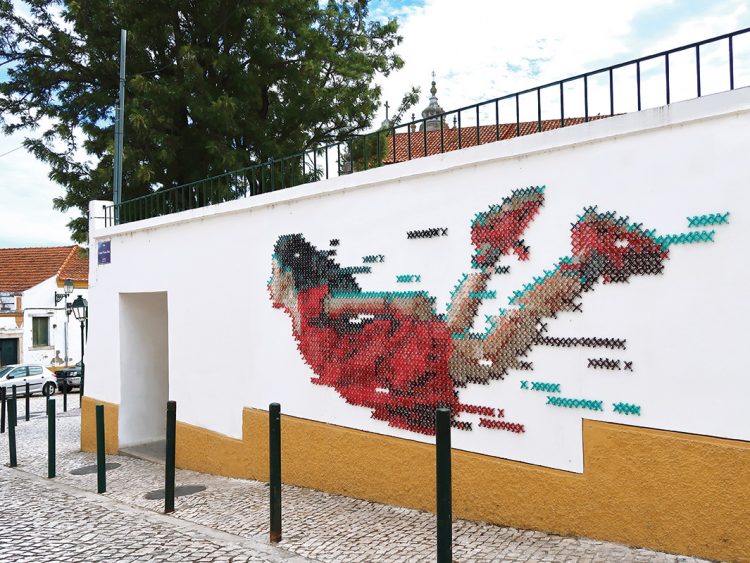
Of course beyond all of this, there’s always the base message of my work, the value that our roots can have in our paths. The importance of not letting the knowledge of our past generations get lost over time, but instead to bring it with us to enrich our new generations and transform them in a way that nobody expected or thought of before. I love how something like this connects the generations.
“If it doesn’t challenge you,
it won’t change you.”-Fred DeVito
Nowadays I’m more focused on street art and big installations. This is, without a doubt, the biggest challenge I’ve faced with my art. It’s also the process that I like the most and the best way I’ve found to relate to and be closer to people.

